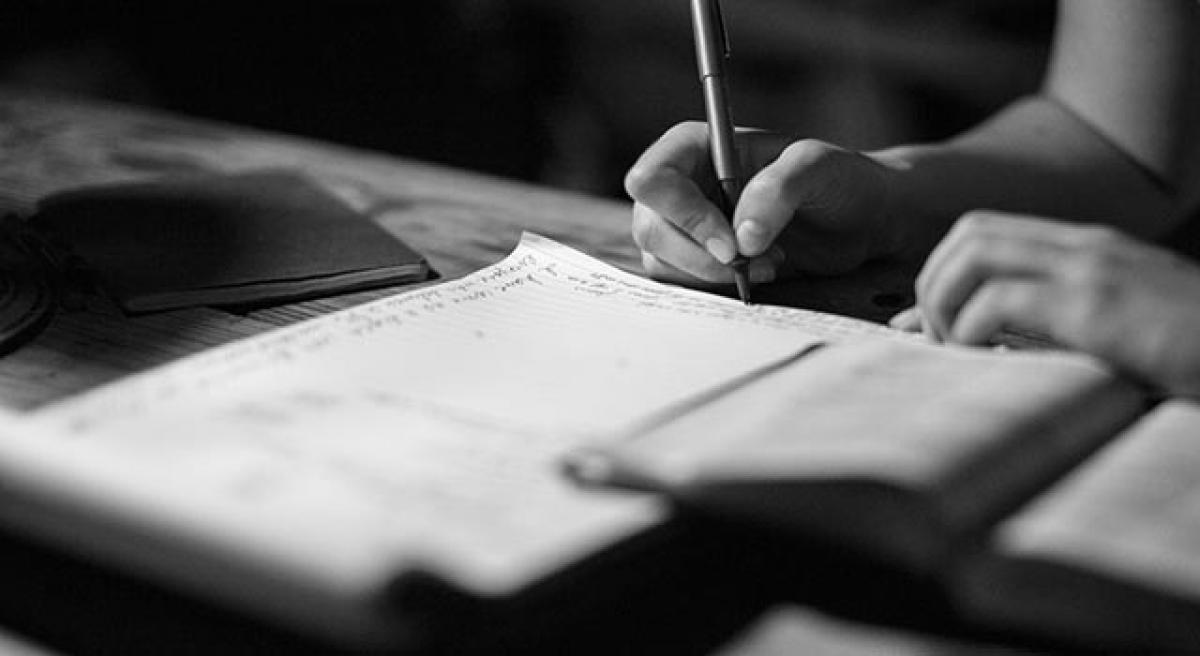Live
- Maha people gave big victory to Mahayuti led by BJP: Kishan
- Don’t rush to cover up harvested grain
- Ensure participation of all farmers in conference: CM
- Public uprising against Cong govt imminent : Bandi Sanjay
- SP conducts surprise inspection of Srikalahasti PS
- Antimicrobial resistance awareness programmes held
- BJP celebrates victory in Maharashtra Assembly polls
- BJP gets shot in the arm ahead of Delhi polls
- Mahayuti’s Maha win
- Passed exam of democracy: Soren
Just In

There is a room for improvement at every step. Identifying the problem and finding a solution are the basic steps to excel. If you are someone who is not equipped with the best study skills naturally, then focusing on the skills and making it a habit is the right place to start.
There is a room for improvement at every step. Identifying the problem and finding a solution are the basic steps to excel. If you are someone who is not equipped with the best study skills naturally, then focusing on the skills and making it a habit is the right place to start.
The new academic year has started. For some students the last year might have ended with joy and accomplishment and for some not so good. Akshara says “I knew I would have done better but something went wrong from the beginning of the year which Icould not correct later”.
So how do you analyse your study pattern and stay on it focused all year long? Simple answer is - When you make it a habit.
Here are some tips to study smart
Every student specially coming to high school should have few study skills embedded in them. Few of them are:
Highlighting / Color Coding
Most popular among students and also one of the effective methods, is when the important information is highlighted. Different colors can be used for different categories of information.
Secondly, notes can involve the reading of certain amount of information, or forming your own questions and answering them by the information you read.
This technique not only enhances your quality of studying, but also prepares the students for the exam.
So by taking notes, you can free your mind from having to recall unnecessary information, and can relax with a feeling of satisfaction on assimilating the information in the topic very strongly in your memory.
Memory
“If you study to remember, you will forget, but if you study to understand, you will remember.”
Memorisation is the key to all the study skills. At the end of the day, reproducing information on paper is all that matters. While understanding is about being able to remember information, memorisation helps to retain that information and bring it back when required. Understanding and memorisation should go hand in hand.
There are effective learning strategies to memorise, some useful techniques to understand material and effective strategies that work best
if the purpose is to understand.
E.G.: PET - This stands for Pinna Ear Tympanic membrane
Flash Cards
Flash cards are a system that can be used to help you to remember items from your course of study.
For example, on one side of the card can be a word, picture, question etc. then on the other can be a definition, phrase, explanation, picture, answer, etc. Start by looking at them on a regular basis, then just look at one side and try to recall the answer subject.
Questioning
Once you have command on your content, next step is to extend the learning and thinking. You can do this by questioning the content. Make your own questions related to the topic. Try to make the questions bit complex by making them application based rather than understanding based.
This practice will help you remember and understand the content for a longer time.
Don’t forget to get into the habit of extended reading for clarity. Though time consuming; reference books help you get clarity on the topic and also make it interesting. You tend to get confidence and satisfaction when you have the command on the topic.
Learning can be made enjoyable and effective if you follow the above strategies. Not every skill can be mastered by everyone but try one strategy at a time and use your study time efficiently. The key to turning these into useful strategies is to make them more active and personal.
Maintain the idea of repeated, distributed practice but make the brain work.
Note taking
Note taking is another important skill to be learned. Note taking, is a method of recording important information, from text you read, to get the essence of the topic you read. It differs for Basically, there are three categories of learning strategies that help you process information and remember
Repetition
It can be used if the purpose is memorisation. Use repetition to help increase familiarity with the material and better hold it in your memory It can be time consuming, so keep some extra time for these exercises.
Mnemonics
A mnemonic device or memory device is any learning technique that aids information retention, in the human memory. Mnemonics make use of elaborative encoding, retrieval cues, and imagery as specific tools to encode any given information in a way that allows for efficient storage and retrieval.
Ex; Knuckle mnemonic for the number of days in each month of the Gregorian
calendar. Each knuckle represents a 31-day month.
Link words
Link words, can be of use for those learning a foreign language. In this case try to form a link between a new word or term in a foreign language and a familiar word.
E.G.: nappe is the French word for tablecloth - so imagine taking a nap on a tablecloth.
Acronyms
Here you develop a word whose letters stand for the terms to be remembered.
By: Vandana Dadi

© 2024 Hyderabad Media House Limited/The Hans India. All rights reserved. Powered by hocalwire.com







